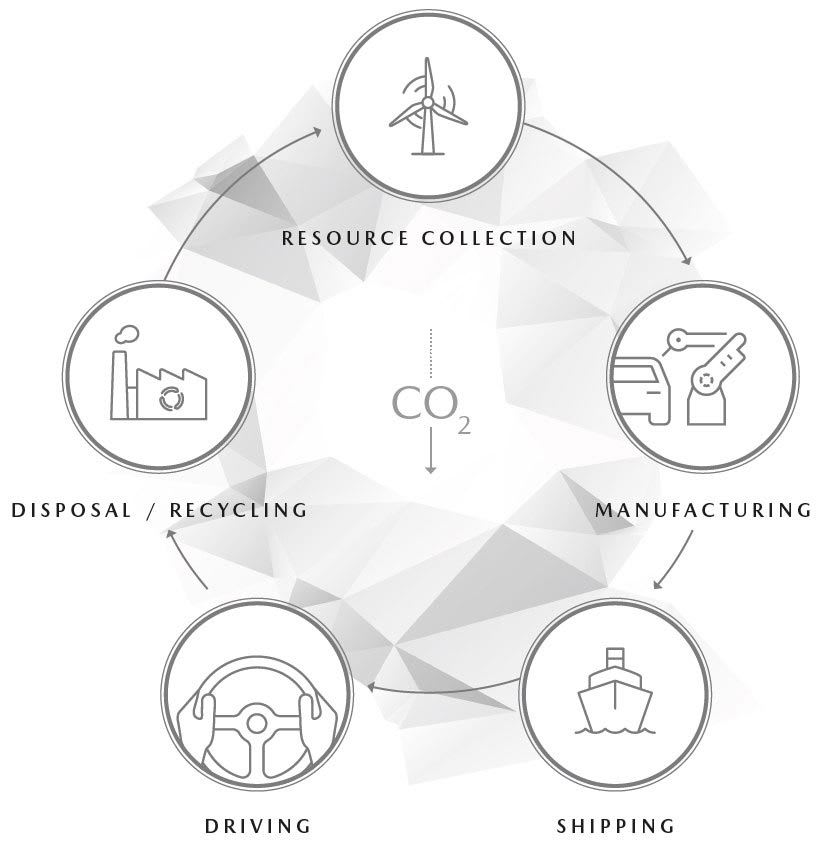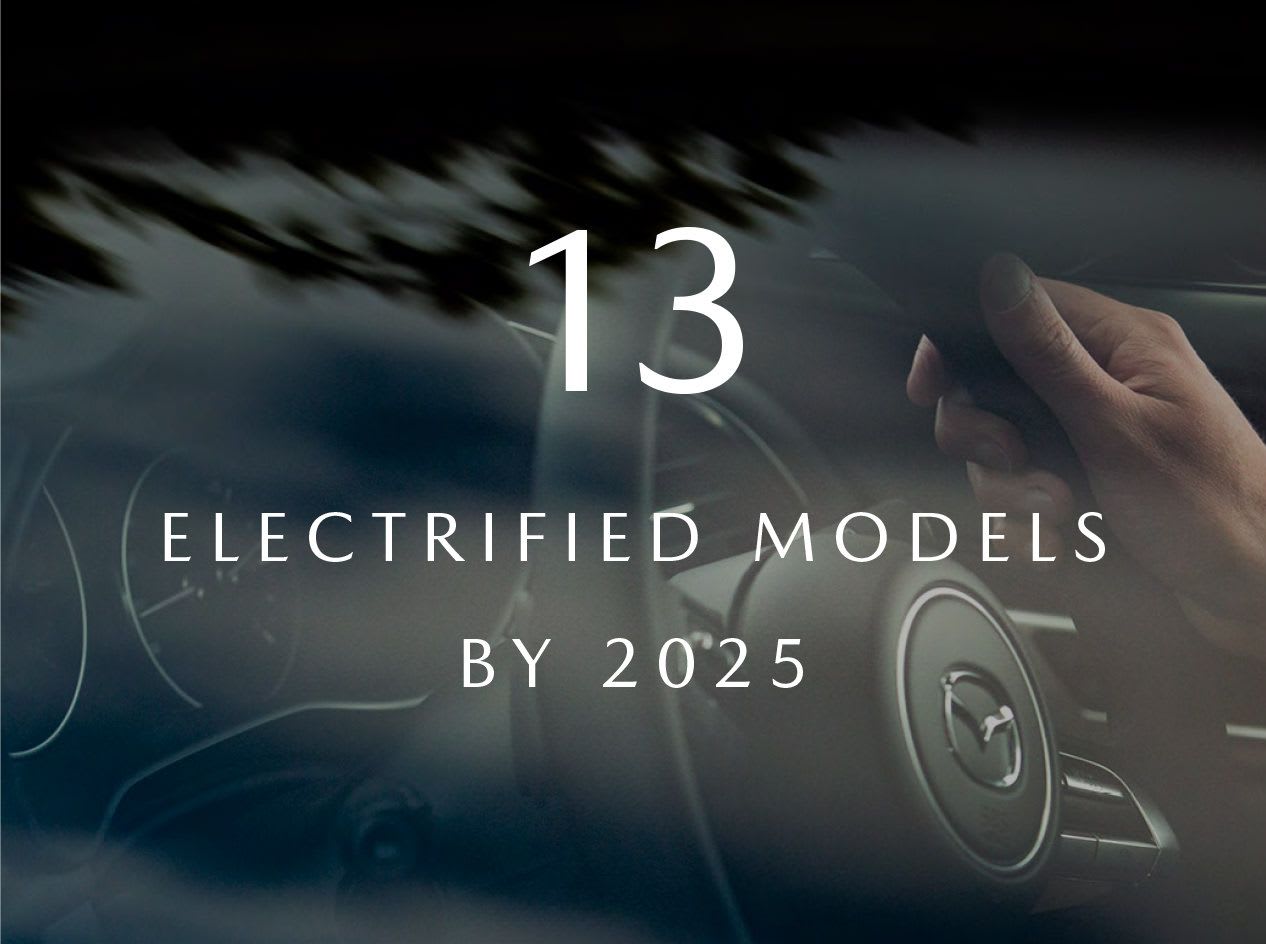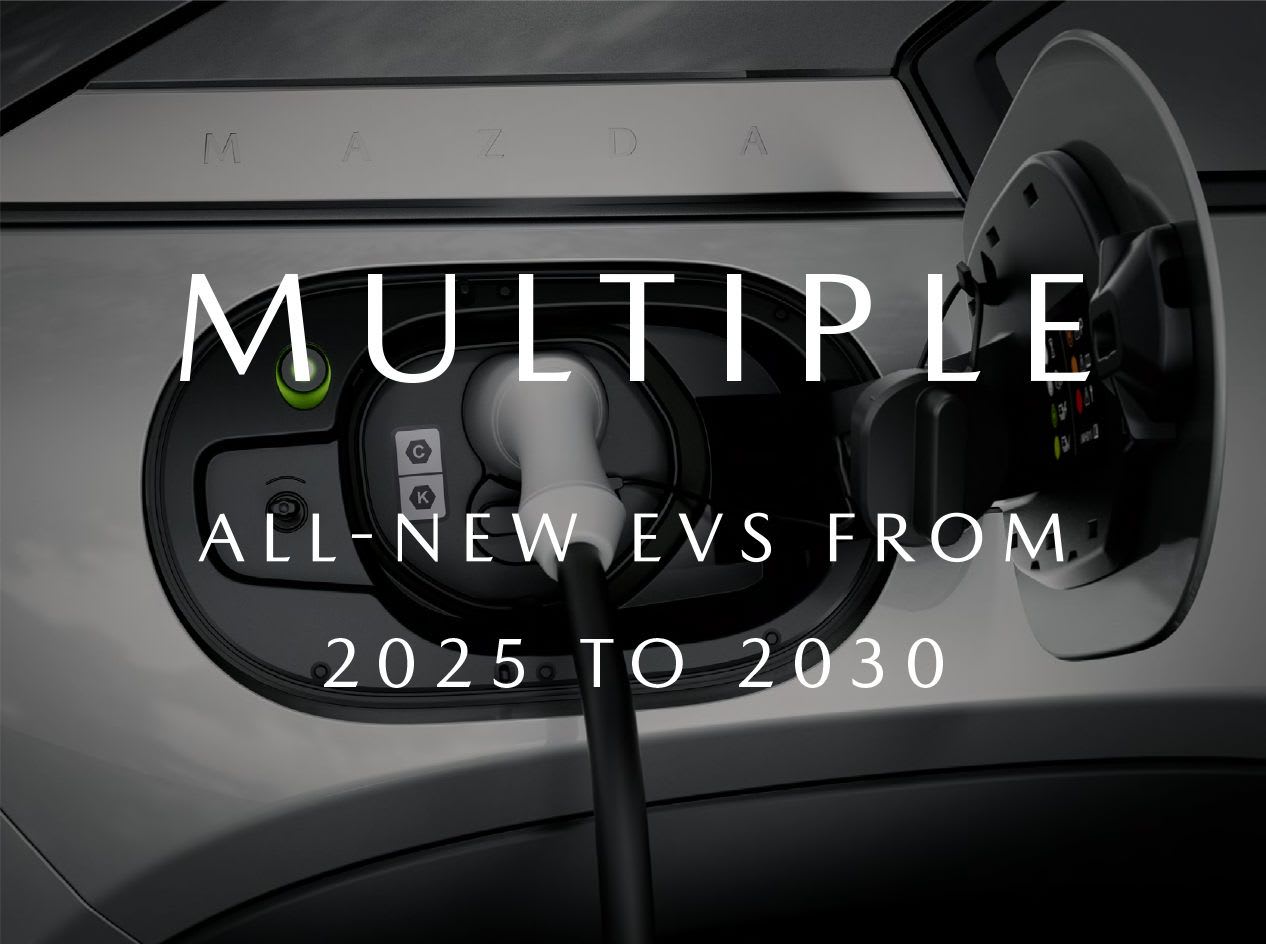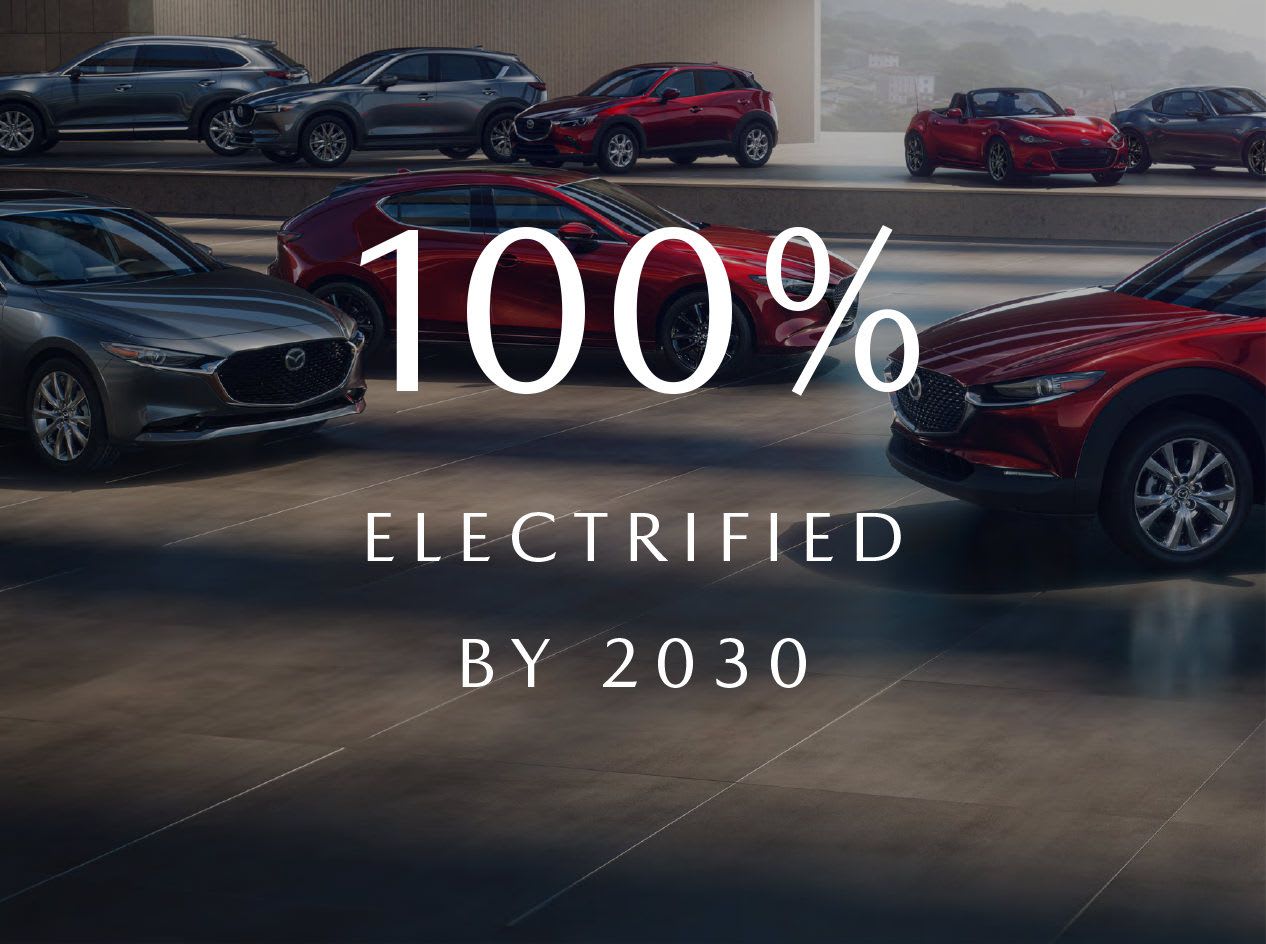
Coming 2026: Register Your Interest
Mazda 6e
Hatchback | Electric | 5 Seats
A love of driving and a love of the earth can—and indeed must—be harmonious. To ensure a long and happy relationship between cars, people, and our precious planet, Mazda is focused on developing the entire lifecycle of its vehicles in an environmentally friendly manner. As Mazda introduces new sustainable technologies, it carefully considers the manufacture, usage, and the end-of-life recycling of its cars to minimize the environmental impact, so you can love driving and love the world around you.

BY 2050, MAZDA WILL ACHIEVE CARBON NEUTRALITY DURING THE ENTIRE LIFE CYCLE OF ITS VEHICLES AND THE ENTIRE SUPPLY CHAIN.

Mazda takes responsibility for the emissions produced by its cars, not just when they’re being driven, but also when they are made and when they reach the end of their use. To reduce the CO2 emissions during the entire life of the vehicle, Mazda uses a Life Cycle Assessment, which allows it to pinpoint areas that can reduce the environmental burden of car manufacture, delivery, use, and recycling.
It is our ongoing mission to reduce the environmental impact of Mazda vehicles at every phase of their life. We use a Life Cycle Assessment to measure, and subsequently reduce the emissions from our supply chain, factories, transportation, the vehicles themselves, and end-of-life programs.
The right car in the right place
There is more to reducing emissions than simply switching over to battery electric vehicles. If the electrical energy used to charge these cars is not produced sustainably then the emissions are merely moved to power stations.
That’s why Mazda offers a multi-solution approach, providing a range of efficient internal combustion, hybrid, plug-in hybrid, and electric cars to suit customers’ needs and the power-generation situations across the world.





Choosing the Mazda that is best for you and the planet depends on where and how you live. Mazda evaluated the CO2 emissions in the life cycle of internal combustion engine vehicles and electric vehicles in five regions of the world. It found that the CO₂ emissions in the life cycle of the internal combustion vehicles and electric vehicles varies depending on circumstances such as electric power generation, fuel economy, and electric efficiency for each region, and the total distance travelled. Based on the results of this Life Cycle Assessment, Mazda has adopted a multi-solution approach to provide the right vehicle in the right place. If the electricity generated in your region is low-emission and your journeys are mostly short, then a battery electric car may well make sense. However, if where you live relies largely on fossil fuels to generate electricity then charging an electric car will still create carbon emissions. In that case, a fuel-efficient combustion-powered or hybrid vehicle may well be a better choice.
(*Based on our own research).

Mazda will introduce 13 new electrified models between 2022 and 2025: five hybrid electric vehicles, five plug-in hybrid electric vehicles, and three electric vehicles.

Between 2025-2030, Mazda will introduce multiple electric vehicles.

By 2030, 100% of Mazda products will be electrified and pure-electric vehicles will account for at least 25% of those.
Mazda’s life cycle assessment has a zero target: net zero CO2 emissions. Here are just a few of the innovations Mazda is making on the road to zero.

Some images may depict overseas models or include optional features and accessories not available locally.